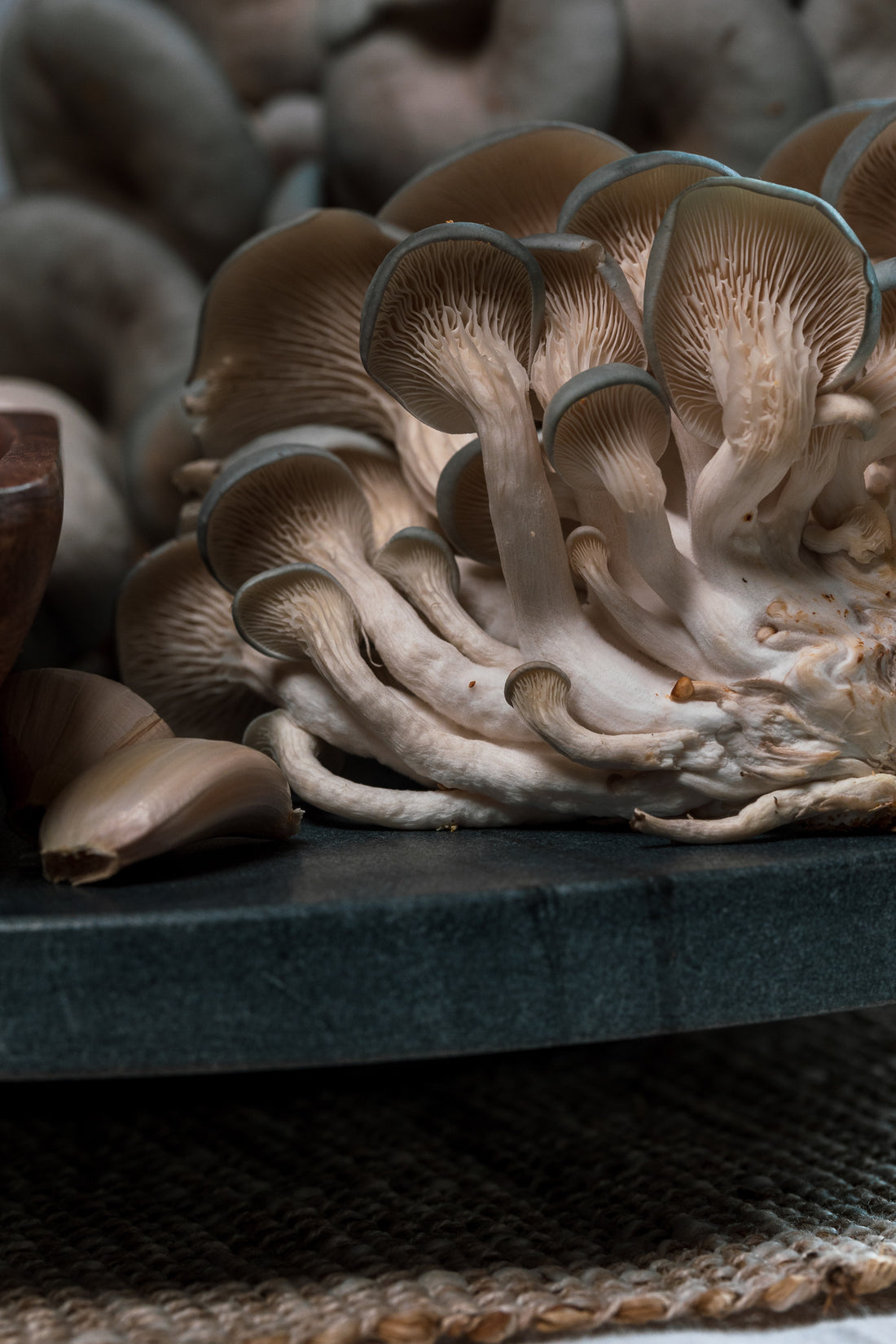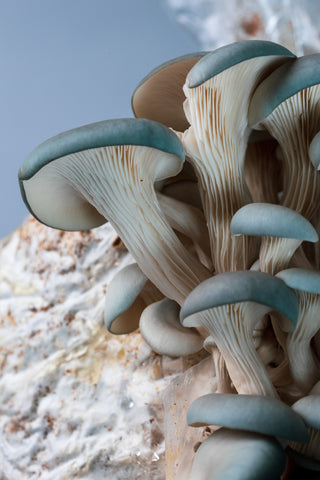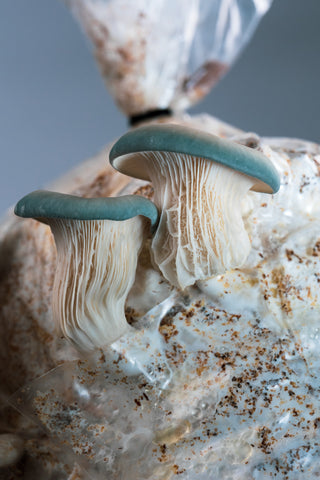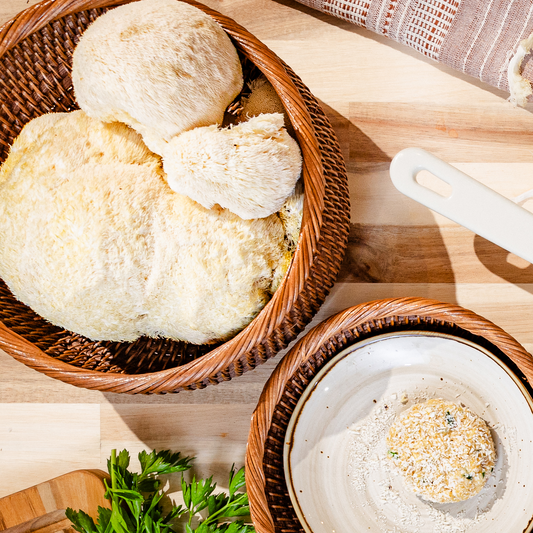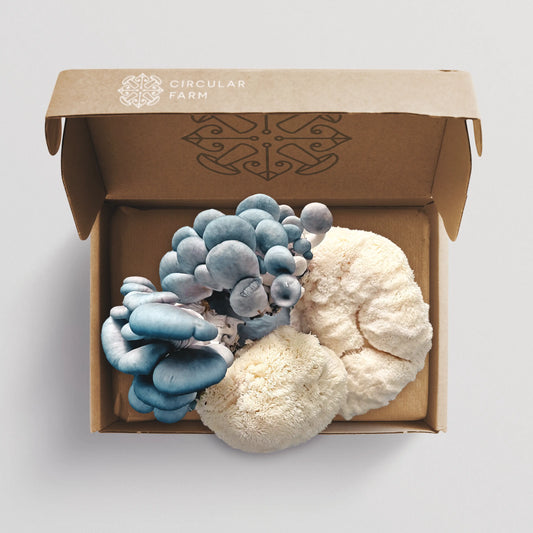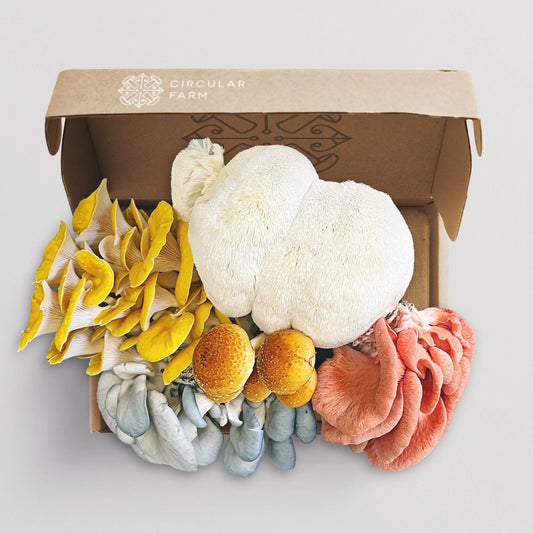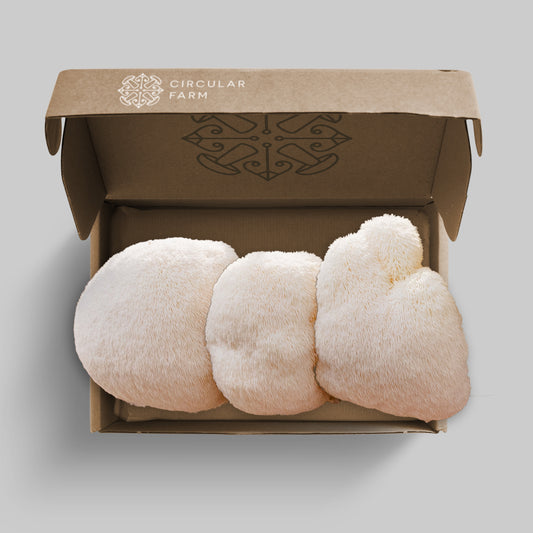Welcome to the Circular Farm Mushroom Cultivation Guide, your comprehensive resource for understanding the intricate world of mushroom farming. From the initial preparation of substrates to the delicate stages of colonization, fruiting, and harvesting, this guide offers valuable insights for both novices and seasoned growers. Whether you're exploring this fascinating field as a hobby or considering it as a sustainable agricultural practice, our Mushroom Cultivation Guide is designed to empower you with the knowledge and skills needed to successfully grow a variety of mushrooms. Let's embark on this remarkable journey together!
Preparing Your Substrate: So you've properly prepared your substrate, and now you're ready to experience the fascinating magic of fungi at its finest at Circular Farm!
Colonization or Incubation: During this critical phase, store the substrate in a dark space (bright and UV light can inhibit or kill mycelium) for 2-5 weeks, allowing the spawn to colonize the substrate. Watch white patches spread as the mycelium consumes nutrients, turning the entire substrate white. Any color other than white indicates contamination, and the substrate must be discarded. Ideal temperatures range from 60° -75° F, with Circular Farm maintaining a steady 74° F.
Fruiting: Once fully colonized, the mycelium forms a thick mat, and it's time to initiate the fruiting process. Fun fact: pink oyster mushrooms have pink mycelium! Move the substrate to an area with over 90% humidity and temperatures between 55°F and 80°F to encourage growth.
Growth and Harvesting: Mushrooms first appear as pins, growing into stems and caps. When the cap inverts and edges wave, they're ready for harvesting. Each flush lasts 3-5 days, and with ideal conditions, harvesting can continue for weeks or even months. Once growth stops, the medium can be composted, and the cycle begins anew.
Harvesting Techniques: Harvesting mushrooms is a labor-intensive process. Stabilize each stalk with one hand, gently twisting it off the base to preserve the developing mycelium. Once harvested, mushrooms can be used fresh, refrigerated, packaged, dried, or even pickled for extended shelf life.
Embracing the art and science of mushroom cultivation is a rewarding and transformative experience. Through this Mushroom Cultivation Guide, we hope you've gained the confidence and understanding needed to embark on your own journey into the world of fungi.
